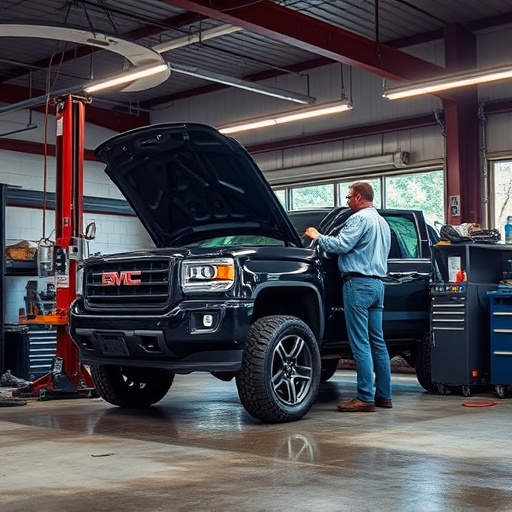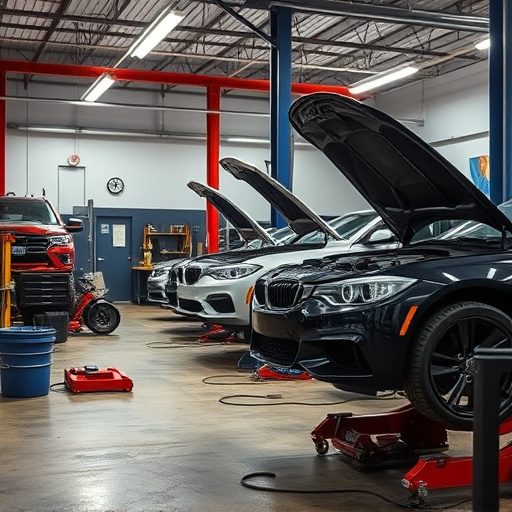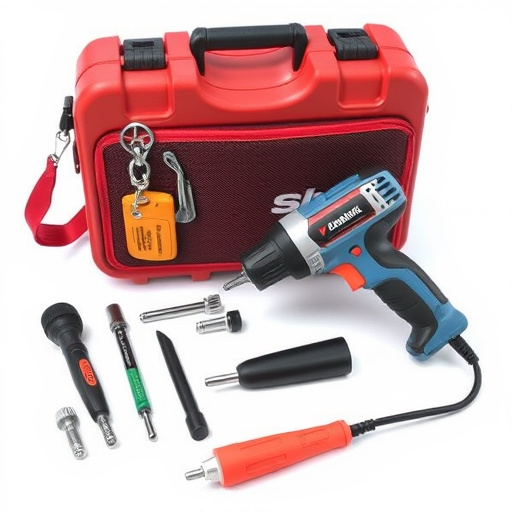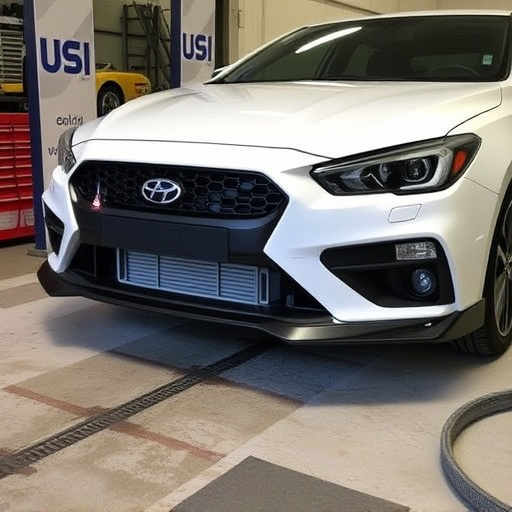Tesla Adaptive Suspension Repair: Battery Weight Impact Explained

The Tesla Adaptive Suspension System enhances handling and comfort but can face issues like sensor m…….
Welcome to an in-depth exploration of a groundbreaking technology that is reshaping the automotive industry: Tesla Adaptive Suspension Repair. This cutting-edge system, pioneered by Tesla Motors (now Tesla, Inc.), represents a significant leap forward in vehicle dynamics and passenger comfort. The article aims to provide a comprehensive guide, offering readers a detailed understanding of this innovative repair process, its global impact, and its role in shaping the future of mobility. By delving into various aspects, from technological intricacies to economic implications, we will uncover why Tesla adaptive suspension repair is not just a technical advancement but a transformative force in modern automotive engineering.
Definition: Tesla Adaptive Suspension Repair refers to the process of maintaining, repairing, and upgrading the advanced suspension systems found in Tesla vehicles. These systems utilize electronic controls, sensors, and actuators to adapt to road conditions, providing optimal ride quality, handling, and safety.
Core Components: The adaptive suspension system in Teslas comprises several key elements:
Historical Context: The concept of adaptive suspension is not new, with early examples in racing cars. However, Tesla took this technology mainstream with its Model S sedan, introduced in 2012. This luxury sedan featured an industry-first advanced suspension system that could dynamically adjust to different driving conditions and driver preferences. Since then, Tesla has continuously refined its adaptive suspension technology, incorporating machine learning and expanding it across various vehicle models.
Significance: Adaptive suspension repair is crucial for several reasons:
Tesla adaptive suspension repair has left a profound impact on the global automotive landscape, influencing both traditional manufacturers and emerging electric vehicle (EV) startups. Here’s an overview of its international influence:
The economic aspects of Tesla adaptive suspension repair are intertwined with the broader automotive industry’s dynamics, influencing both manufacturing and consumer behavior.
Market Dynamics:
Investment Patterns:
Economic Impact:
Tesla’s adaptive suspension technology has been at the forefront of automotive innovation, incorporating several groundbreaking advancements:
The development and repair of adaptive suspension systems are subject to various policies and regulations that vary across regions, ensuring safety and environmental standards while fostering innovation.
Safety Standards:
Environmental Regulations:
Regulatory Bodies:
Despite its numerous advantages, Tesla adaptive suspension repair faces several challenges and criticisms that require careful consideration:
Strategic Solutions:
Case Study 1: Tesla Model S – Luxury and Innovation
The 2017 Tesla Model S was a shining example of how adaptive suspension repair can enhance luxury vehicle dynamics. Independent tests revealed that the system provided an exceptional ride quality, even on rough city streets, while offering precise handling for highways. The Model S’s ability to adapt to changing road conditions and driver preferences set a new standard in the market, encouraging competitors to raise their game.
Key Takeaways:
Case Study 2: Ford F-150 Lightning – Electric Pickups and Dynamic Ride
Ford’s electric pickup truck, the F-150 Lightning, features an advanced suspension system adapted from its gasoline counterparts. This case study highlights how traditional automakers are integrating Tesla-inspired technology into their EV offerings:
Lessons Learned:
The future of Tesla adaptive suspension repair is filled with promising prospects, driven by technological advancements, evolving consumer demands, and global trends.
Emerging Trends:
Strategic Considerations:
Tesla adaptive suspension repair has evolved from a niche feature into an essential aspect of modern automotive engineering, influencing vehicle design, safety standards, and consumer expectations worldwide. As technology advances and electric mobility gains momentum, the role of adaptive suspension will only become more critical. This article has provided a comprehensive overview, highlighting the history, impact, challenges, and future prospects of this remarkable technology.
By embracing innovation, addressing regulatory requirements, and prioritizing sustainability, Tesla and its competitors are paving the way for a new era in automotive dynamics. The global community benefits from enhanced safety, improved passenger comfort, and reduced environmental impacts. As the industry continues to evolve, adaptive suspension repair will remain at the forefront, shaping the future of mobility and ensuring that rides are not just comfortable but also safe, efficient, and enjoyable.
Q: How does Tesla’s adaptive suspension differ from traditional shock absorbers?
A: While conventional shock absorbers primarily control spring movement, Tesla’s system employs electronic controls and sensors to adjust the height and stiffness of the suspension in real time, offering a more dynamic ride.
Q: Can I upgrade my older Tesla model with an adaptive suspension system?
A: Upgrading existing vehicles is possible through specialized repairs or retrofitting kits, but it may involve significant costs and complexities, depending on the vehicle’s architecture.
Q: Is adaptive suspension necessary for all-electric vehicles (EVs)?
A: While some EVs have simpler suspension systems, adaptive suspension enhances ride quality and handling, particularly in electric trucks and SUVs where passenger comfort is a priority.
Q: How does adaptive suspension contribute to vehicle safety?
A: By actively managing wheel movement and maintaining optimal contact with the road, adaptive suspension systems improve stability and traction control, reducing the risk of accidents, especially on slippery surfaces.
Q: Can I adjust my Tesla’s adaptive suspension settings myself?
A: Some Tesla models allow for basic customization through vehicle settings, but advanced adjustments and repairs should be left to certified technicians due to the complexity of electronic systems.

The Tesla Adaptive Suspension System enhances handling and comfort but can face issues like sensor m…….

The Tesla Adaptive Suspension System requires regular care and maintenance for optimal performance……..

The Tesla Adaptive Suspension System requires specialized repair after collisions, even minor ones,…….

The Tesla Adaptive Suspension System requires specialized repair for optimal performance after issue…….

Tesla adaptive suspension repairs require specialized knowledge and tools, often not found in tradit…….

Tesla adaptive suspension repair demands specialized tools and meticulous precision. Safety protocol…….